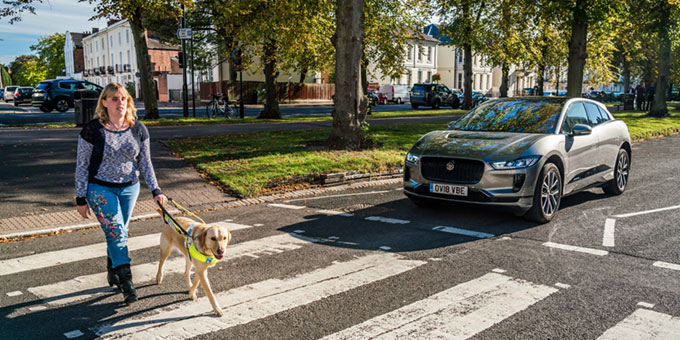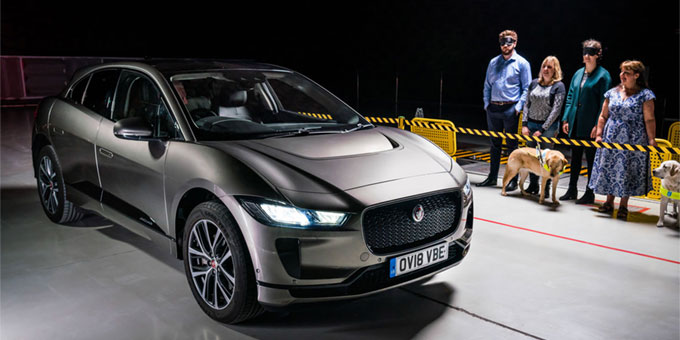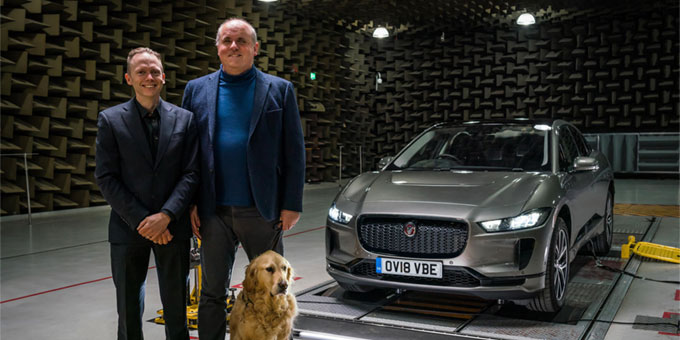Posted on October 12, 2018 in Cars.
Jaguar I-Pace becomes audible to protect road users
With no engine noise, the electric Jaguar I-PACE needed to warn the blind and other vulnerable people of its approach at low speed. Jaguar has developed a specific audible warning system for its first electric vehicle: the Audible Vehicle Alert System (AVAS), which meets all international regulations.

Photo: DR
Jaguar engineers have developed a sound that can be heard up to 20km / h and exceeds the 56dB (A) required by future European law - the strictest in the world - for all electric vehicles from July 2019.
The sound of I-PACE was notably tested by members of 'Guide Dogs for the Blind', the UK's premier charity for people with visual impairments. These tests also mark the start of an ongoing relationship between the two organizations.

Photo: DR
The absence of the usual engine noise on electric vehicles poses a problem for vulnerable pedestrians such as people with blindness, especially at low speeds in town or in parking lots. We have developed the I-PACE AVAS system to ensure the safety of all road users. As a leading charity supporting the visually impaired, we are proud to be supported by 'Guide Dogs' to ensure our testing is carried out by the people primarily affected.
Iain Suffield
Jaguar NVH Technical Specialist (noise, vibration and roughness
Jaguar engineers have worked for four years to develop sound that is audible but unobtrusive and cannot be heard in the cabin. The first tests, which were inspired by the sound of a sci-fi spaceship, had to be scrapped because pedestrians reacted to the approach of the vehicle by looking at the sky rather than the road.

Photo: DR
The different sounds were tested in several environments, including an anechoic chamber, and in urban conditions before opting for the sound of the I-PACE. The sound, emitted by a speaker located behind the grille, is audible in all directions.
The alert tone and volume increase with the speed of the car; an additional sound indicates that the vehicle is reversing. The AVAS system is not needed at higher speeds because the noise of air and tires are enough to warn pedestrians that a zero-emission car is approaching.
To know more : https://www.jaguar.fr
Rallye des Princesses: 5th and last stage in La Baule
Rallye des Princesses Richard Mille 2022: summary of stage 4
Rallye des Princesses 2022: the highlights of stage 2








